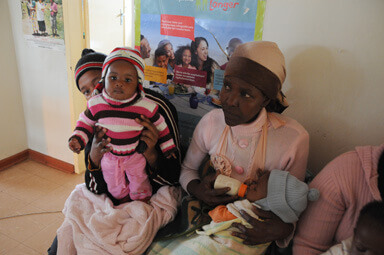Kaitlin ChristensonGHTC
Kaitlin Christenson is director of GHTC.
GHTC Director Kaitlin Christenson attended Secretary of State Hillary Clinton’s speech at the National Institutes for Health (NIH) yesterday and blogged her reaction to the address for Breakthroughs.
To a room full of dignitaries, US policymakers, members of Congress, research leaders, and global health advocates at NIH yesterday, Secretary of State Hillary Clinton declared that in the midst of difficult budget times, “investing in our future is the smartest investment we can make.”
The Secretary spoke with pride and hope about the historic leadership that the US government has played in advancing progress to combat HIV and AIDS, and the need to stay the course—even as Congress considers budget cuts which may affect global health and HIV and AIDS funding—as we work toward the previously unimaginable goal of an AIDS-free generation.

During her speech, Clinton highlighted the numerous advances made possible through an investment in science by the US government: American scientists were the first to report the AIDS epidemic; NIH research provided proof that HIV causes AIDS; the US government supported the development of the first drugs to treat AIDS; and continued US investments are supporting the search for a vaccine, microbicides, and other tools.
But she could have added even more successes to this list. In the past two years, US-funded research has:
It is scientific advances like these that will lead us to a new era in the AIDS epidemic, and US policymakers must do all that they can to protect our investment in the research that will yield the new tools that are so critically needed.
In Washington, she joked, some would prefer that we operate in an “evidence-free zone.” But she called on all of us to stand up for science and evidence, and keep our focus on the future, urging us to consider what the world would look like if we succeeded in our goal of an AIDS-free generation. “That is the world that has always been at the core of American belief, and we have worked toward it in our own history. It’s the world I think we all would like to live in. An AIDS-free generation would be one of the greatest gifts the United States could give to our collective future.”
Thanks to the scientific advances in recent years, the global community is finally positioned to end the AIDS epidemic. The US government must answer Secretary Clinton’s call to keep the momentum going and seize this historic opportunity.